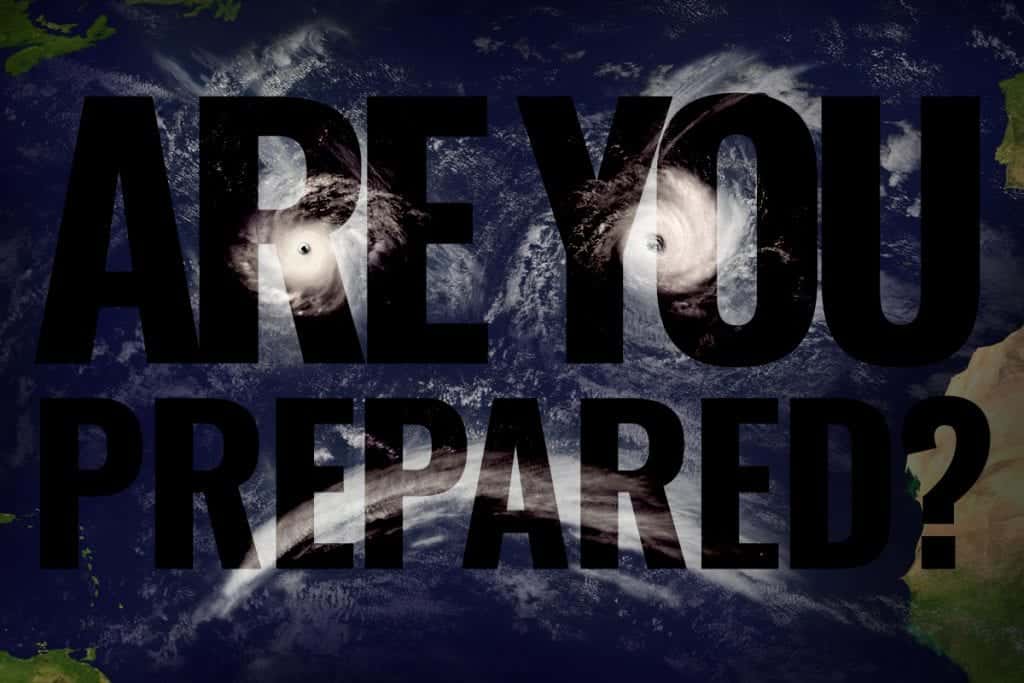Hurricane season officially started on Friday, June 1st. The NOAA estimates that this year will see near- or above-normal activity in the Atlantic Ocean, while the second major hurricane of the Eastern Pacific Season has already formed off the coast of Mexico.
That means the time is right to highlight the importance of disaster preparedness—especially in light of the devastating thunderstorms, tornados, and floods that affected several parts of the country in April and May.
So what does this have to do with technology? Many business owners overlook remote backup, disaster preparedness, and business continuity planning because they assume a natural disaster will never affect them. Statistics from the National Small Business Administration show that anywhere from 60-70% of small business owners don’t have a disaster recovery plan; more than 75% don’t have natural disaster insurance, and more than 60% don’t have access to a backup generator.
Why? Many say it’s because they don’t live on the coast, near a river, in Tornado Alley, or on a fault line. But the NSBA estimates that 65% of US businesses are situated in geographic areas that regularly suffer from natural disasters. And the data centers that house the bulk of US business information are primarily located in populous states like California, Texas, New York, Florida, and Washington—coincidentally, the same five states that lead the pack in FEMA disaster declarations.
CMIT Solutions recommends the following five critical steps:
The vast majority of business backups are done on-site—often on drives located directly next to the computers they’re backing up. If fire, flood, or theft affects your business, you can’t expect those backups to be spared.
Instead of getting bogged down in the details of a particular disruption, comprehensive disaster recovery planning addresses the steps necessary to get your business up and running, no matter the event.
Many business owners think that, even if a disaster strikes, they’ll only be affected for a few days. This is one of the indirectly harmful assumptions one can make—take Hurricanes Harvey or Maria, for instance, both of which affected huge chunks of the population in Texas and Puerto Rico, respectively, often for months at a time. Those businesses that were able to maintain operations while rescue and recovery operations were underway were the same ones that saw their reputations as pillars of the community strengthen in the wake of those devastating storms.
The best disaster preparedness plans include virtualization, which takes the data you have backed up remotely and rebuilds it on existing or secondary equipment in case of disaster. But if you haven’t tested your solution to see how quickly it can retrieve information and get you back up and running, you could suffer. Top-tier offerings like CMIT Guardian can perform a full restore in less than 48 hours—and those hours can mean the difference between weathering a storm and succumbing to it.
This focuses on employee responsibility and communication—how everyone will be notified in the wake of a disaster, who handles which parts of the recovery plan, what lines of communication will be relied upon, primary roles vs. backup roles, etc. Testing these in advance is crucial to success.
Still don’t think disaster preparedness is important? That’s where CMIT Solutions comes in: we specialize in helping small to medium-sized businesses prepare for and weather even the roughest of storms.
In the last few years, we’ve helped scores of businesses survive hurricanes, floods, wildfires, and ice storms, along with the day-to-day perils of human error and hardware failure. As fellow business owners ourselves, the best feeling we get is when we can help you overcome such obstacles. Contact us today so we can put you on the path to well-prepared success.

